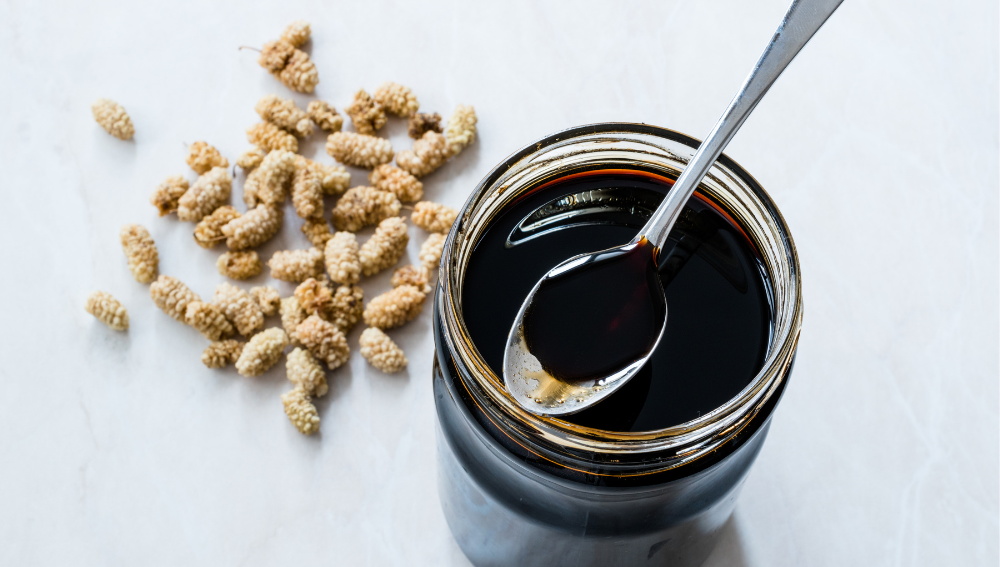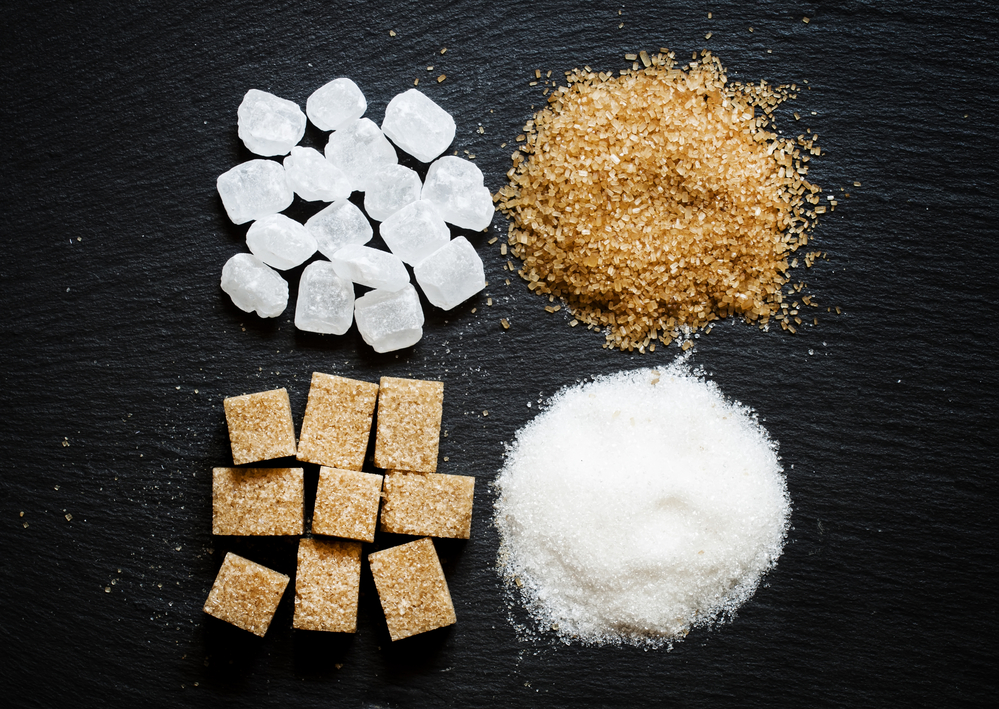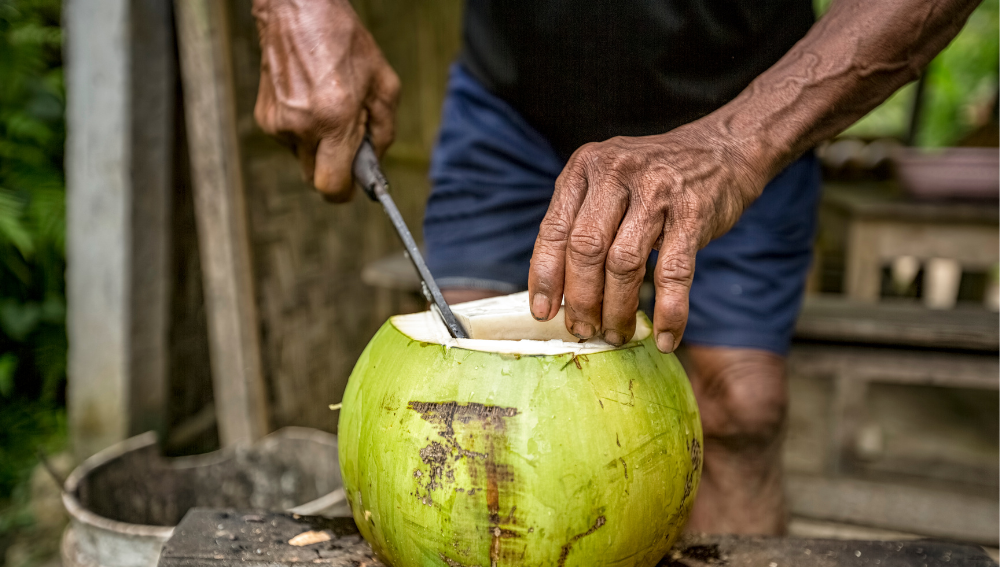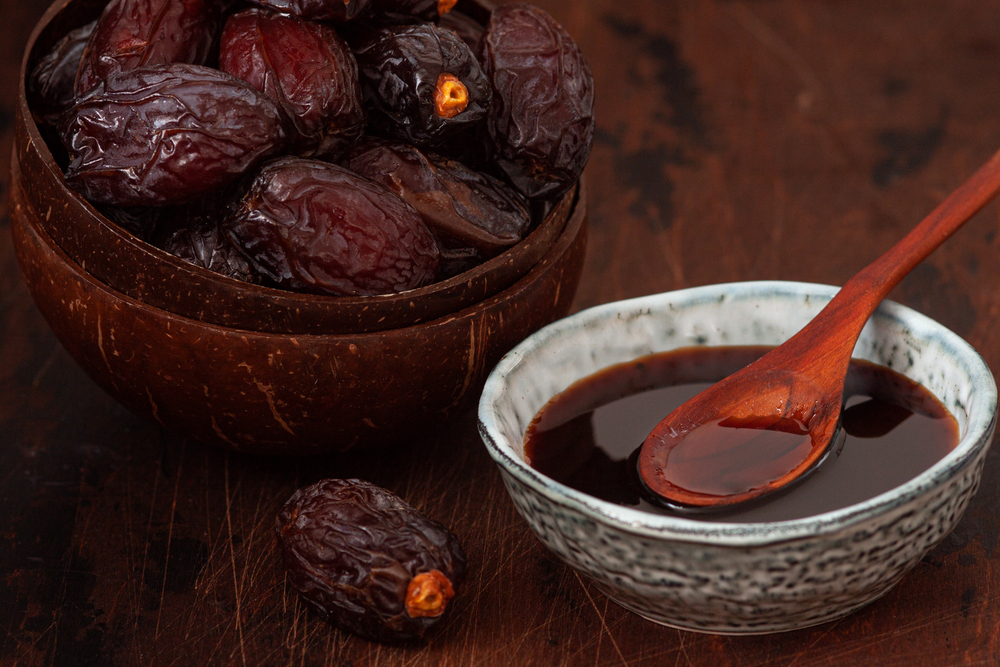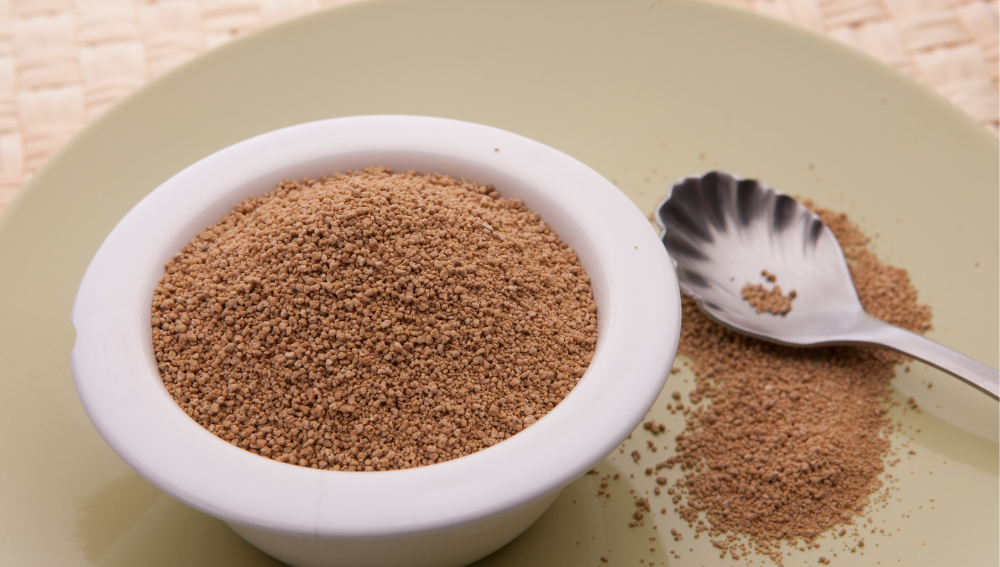If you’re new to the world of monk fruit sweeteners, you might be surprised to learn that there are actually several other zero-calorie options on the market. If you’re looking to try one of these alternatives, we’ve got you covered!
Read on to learn more about the unique sweetness and flavor profiles of each substitute so that you’ll have no problem finding an alternative that works for you.
In a pinch or if you simply want a different option you can always use regular sugar, stevia, erythritol, or any other low- or no-calorie sweetener.
Monk Fruit Sweetener Overview
Monk fruit sweetener is a natural sweetener made from the monk fruit plant also known as Luo Han Guo, which is grown in Asia. This fruit has been used for centuries as a medicine and sweetener!
The active ingredient derived from the green gourd is called mogrosides. These are highly concentrated sweeteners that rank in around 200 times sweeter than your average table sugar.
Monk fruit contains no calories or carbs, making it safe for diabetics to use as an alternative to regular white sugar. Its neutral flavor lends well to any recipe as it won’t change the flavor of the dish.
It’s also been shown to have antioxidant properties that may help protect your body from free radicals (unstable molecules).
Can I Use Regular Sugar Instead of Monk Fruit Sweetener?
The answer is yes, you can use regular sugar instead of monk fruit sweetener. But we don’t recommend it. Why not?
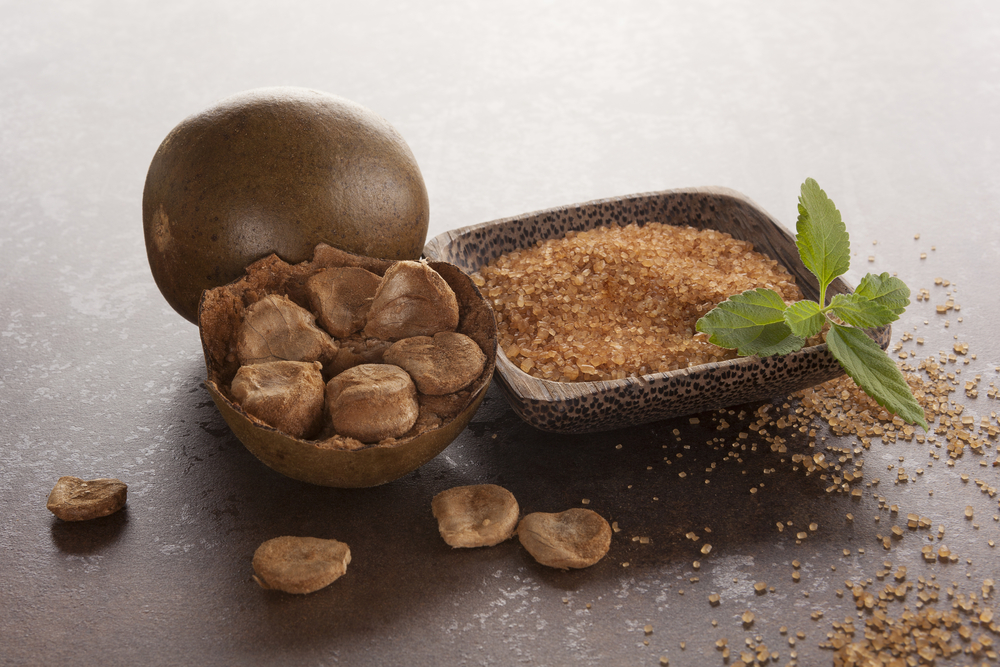
- Sugar has a glycemic index of 65–meaning that it’s high in carbs and will spike your blood sugar levels quickly. This can lead to weight gain and other health problems down the road.
- Monk fruit sweetener contains no calories or carbs and no added chemicals or preservatives like other sweeteners do; it’s all natural!
Most people turn to monk fruit as a sweetener because of its no-calorie, no-carb status. While you can use regular sugar instead of monk fruit, you lose those healthy benefits. Choosing another low-calorie and low-carb substitute may serve your dietary goals better.
What Can I Use Instead of Monk Fruit Sweetener?
While monk fruit sweetener is gaining in popularity and has become easier to find, it’s also on the expensive side and isn’t an option for everyone.
Don’t give up hope yet though! There are plenty of other options whether you’re out and need something in a pinch or want another low-calorie option to sweeten your favorite recipes.
As monk fruit is so incredibly sweet, make sure to taste your recipes. Your substitute is most likely not as sweet so you’ll have to add until you reach the desired sweetness.
1. Stevia
Stevia is a plant-based sweetener. It’s naturally derived from the stevia plant, and it’s calorie-free! Stevia is heat stable and doesn’t break down when heated, which makes it an ideal substitute for sugar in baking recipes.
Stevia has been used in Japan since the 1970s as a natural alternative to artificial sweeteners like saccharin (Sweet ‘N Low), aspartame (Equal), and sucralose (Splenda). Stevia works by combining with special receptors on your taste buds that interpret sweetness differently than other flavors such as bitter or salty ones–therefore making stevia much sweeter than regular table sugar but without adding any calories!
Stevia has also been shown to not only care for your blood sugar levels, but lower blood pressure and reduce inflammation.
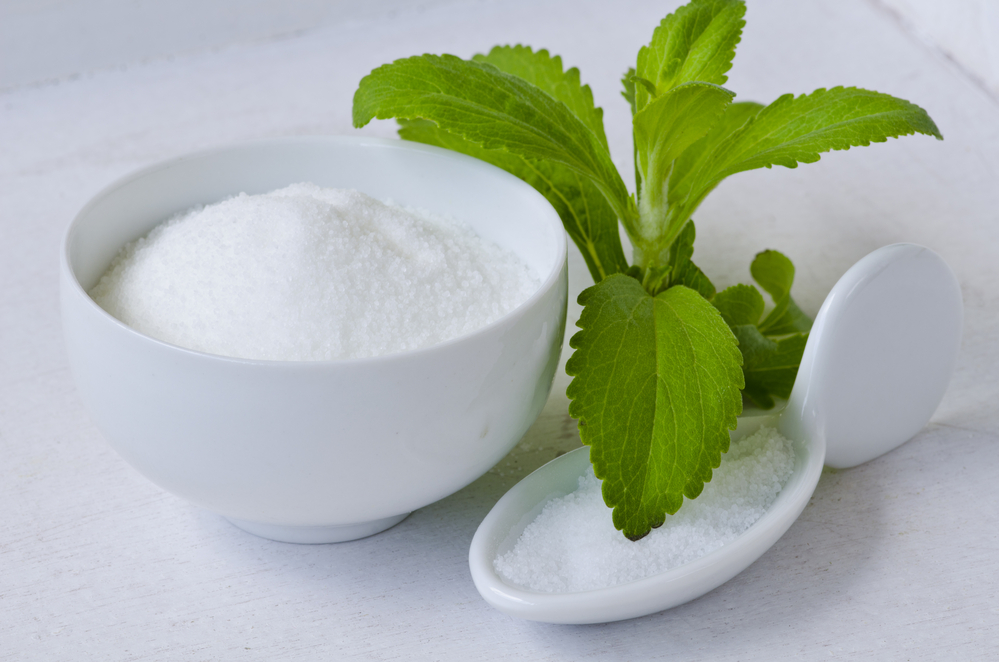
Please take note, the liquid form of stevia is much sweeter than the granulated version. The liquid is great to add to beverages and the granulated in baking. You’ll want to add about twice the amount of stevia that you would normally add in monk fruit.
2. Agave Nectar
This natural sweetener derived from the agave plant is used all over the world now. It tastes a little like honey, but is decidedly sweeter.
While a sugar product, agave nectar has a lower glycemic index than that of regular sugar and won’t raise your blood sugar levels as fast. This has made agave nectar more and more popular over the years as a sweetener.
While not as perfect in the low-calorie, low-carb department as monk fruit, it still makes a great substitute. Just watch yourself. The incredible sweetness of agave nectar has been known to stimulate overeating.
You’ll want to aim for twice the quantity of agave nectar to your usual monk fruit quantity to achieve the same sweetness level.
3. Regular Sugar
Regular sugar is a carbohydrate. It’s made from sugar cane or sugar beets and has a high glycemic index, meaning it can cause your blood glucose levels to spike quickly. This is not recommended as a sweetener because it has many health risks associated with it such as:
- Tooth decay – Sugar causes bacteria in the mouth to produce acid that causes tooth decay.
- Weight gain – The body converts excess calories into fat stores which leads to weight gain and obesity over time if you eat too much of this product regularly (even if you do other forms of exercise).
However, moderation is okay in everything. To obtain the same sweetness you’d get with monk fruit, you’ll have to add more sugar. You’re looking at triple the quantity of sugar compared to that of monk fruit.
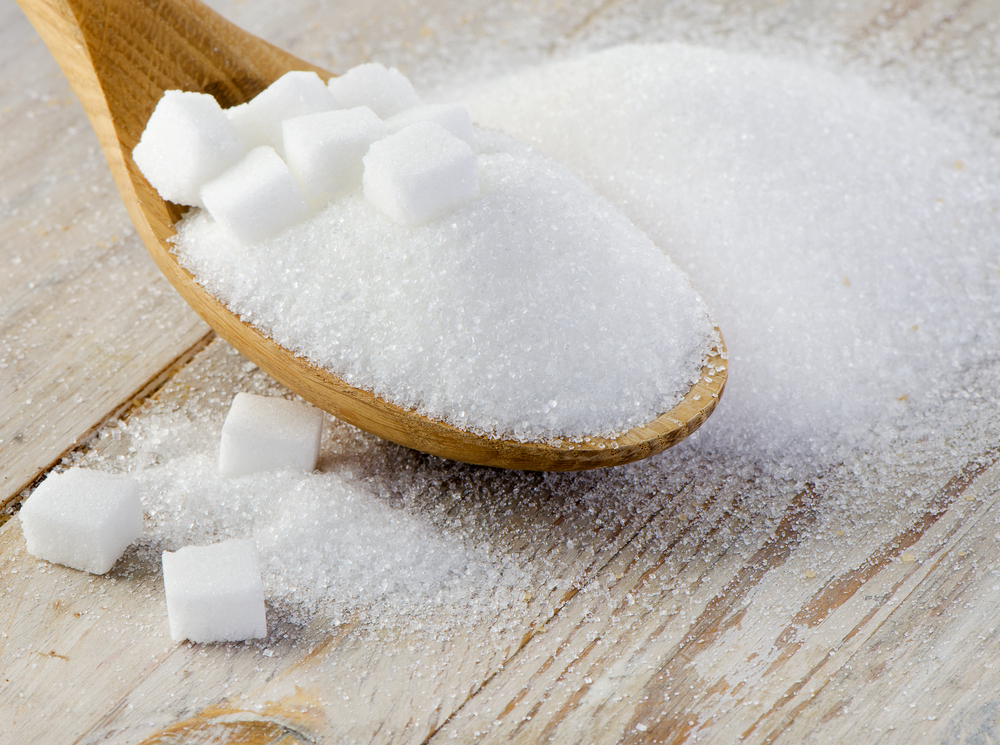
4. Brown Sugar
Combining molasses and regular sugar, brown sugar has a dark color and a more smokey, caramel flavor. It adds a great flavor to your baked goods.
Consider brown sugar as an option in your tea or coffee, the unique flavor helps balance out the bitterness of your favorite morning beverage.
Brown sugar is not a low-calorie monk fruit substitute. It’s a great sweetener, but not a great option for those following a low-calorie or low-carb diet.
5. Maple Syrup
This age-old sweetener made from sugar maple sap is an excellent monk fruit substitute. It’s a favorite for pouring over pancakes and waffles or dripping into your morning coffee.
Compared to sugar, maple syrup has lower calories and a lower glycemic index meaning it won’t spike your blood sugar as much or as fast.
Being a natural sweetener, maple syrup has other benefits besides a sweet taste. It contains nutrients like potassium, manganese, and calcium. These are great for your bone health and the prevention of chronic ailments.
Around two parts maple syrup should achieve the same level of sweetness as one part of monk fruit.
Be advised that maple syrup will sweeten your recipe, but will also add a different flavor. It does not have the neutral flavors that monk fruit does.
6. Erythritol
Erythritol is a naturally-occurring sugar alcohol that is found in fruits, vegetables, and fermented foods. Erythritol has been approved by the U.S. Food and Drug Administration (FDA) as a food additive since 2001 and has been shown to be safe for human consumption at high doses (up to 25 grams per day).
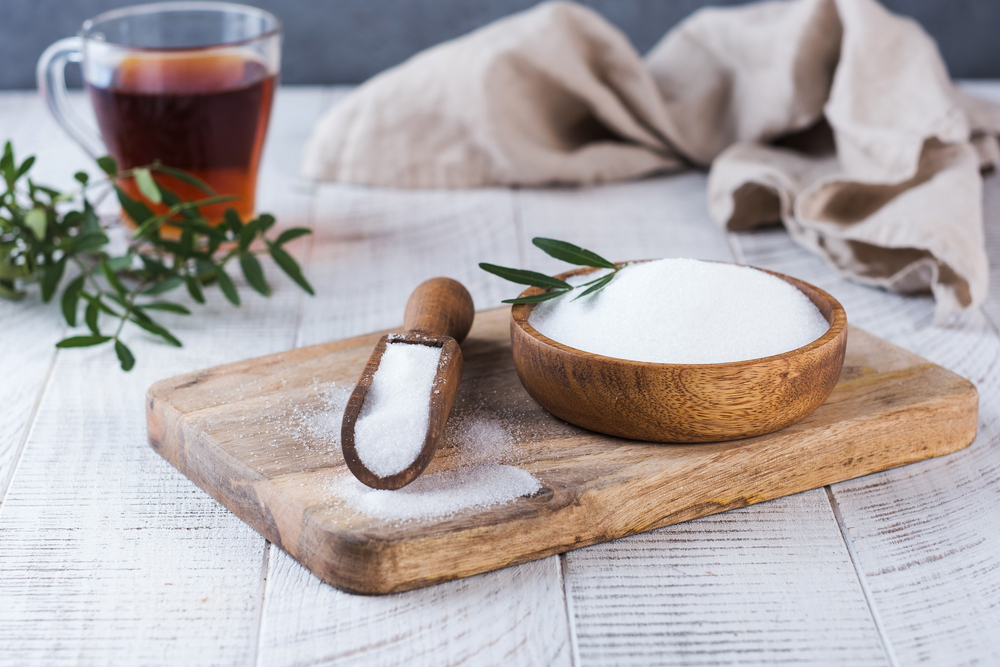
Erythritol does not contribute significantly to blood sugar levels and is a popular low-carb sweetener. It’s not a sweetener that you’ll want to consume in large doses, but it carries many health benefits.
As with all sugar alcohols, erythritol can cause digestive upset in some people, but not as much as other sugar alcohols.
In some research studies, it was even found to lower blood sugar levels, act as an antioxidant, and improve blood circulation.
7. Honey
The world’s first and original sweetener, honey has been used by people for millennia. So why not use it as a monk fruit substitute?
On top of its sweet taste, honey has a number of helpful medicinal properties and is completely natural. Honey has been used as a home remedy for stomachs and sore throats for a long time and recent studies have shown that it can speed up the healing process in the skin, specifically that of wounds and burns.
Honey is a naturally derived sugar created by bees. It is not an appropriate substitute for someone following a low-calorie or low-carb diet.
You’ll want to use around twice the amount of honey as you would add monk fruit for a comparable level of sweetness.
8. Molasses
Molasses is a side product in the production of sugar and cane sugar. The light and dark molasses and their flavors are dependent on when during the sugar making process the syrup was removed.
Being a by-product of sugar processing, molasses is not low-carb or low-calorie, but still a delicious and caramel-like sweetener.
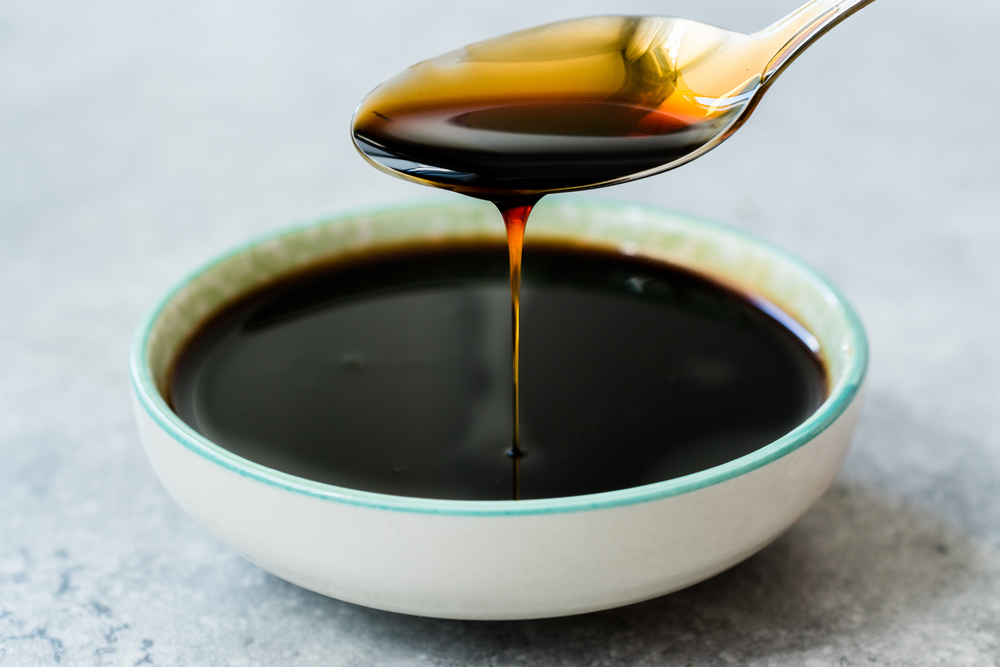
You’ll want to use double the amount of molasses as you would monk fruit. When deciding on whether to use molasses as a substitute, remember that it has a strong flavor and scent that will affect your recipe.
9. Sucralose
Another popular low-calorie sweetener, commonly known as Splenda, sucralose makes for a decent monk fruit substitute. It’s a by-product of sugar as it is made of sugar alcohol.
Compared to sucrose, sucralose is 600 times sweeter and carries no calories. This is an excellent substitute for monk fruit for those following a low-calorie and low-carb diet.
With similar levels of sweetness, you can use sucralose in a 1:1 ratio to monk fruit.
Conclusion
If you’re looking for a non-caloric sweetener, there are many options available to you. Some of the best alternatives include stevia, erythritol, and sucralose. All three have their pros and cons, but they are all effective at reducing the amount of calories in your diet.
If you’re not following a special diet, there are plenty of sweeteners out there to replace your monk fruit in a pinch.


